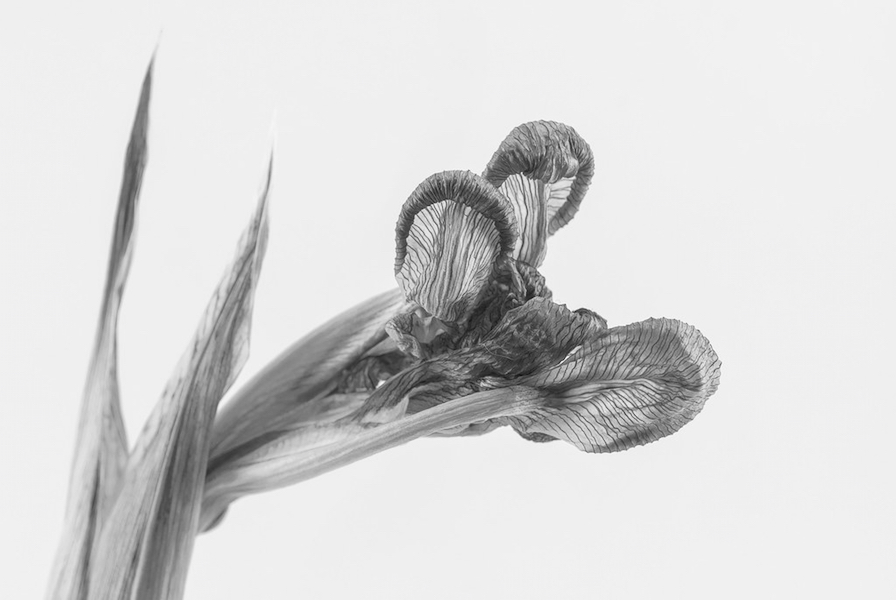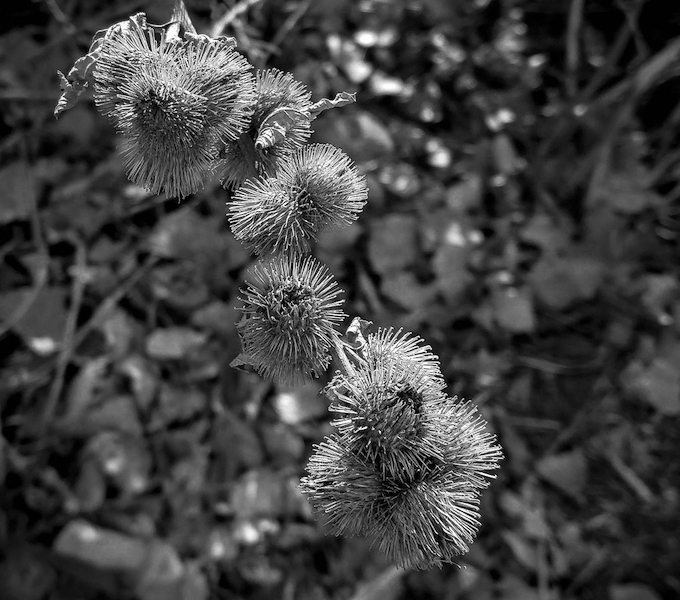Disregard the drooling mouths, the incoherent babbles, the lack of fine motor skills: babies are geniuses. At birth, babies can discern every speech sound found in every language. They may not produce much more than dirty diapers, but they absorb the sound profiles of languages like sommeliers sampling pinot grigios. Send a Japanese baby to Britain, and she’ll distinguish red from led. Drop a Brazilian baby in southern Africa with the Ju|’hoansi, and he’ll crack the code of their consonantal clicks. An American baby can decipher that meaning lives in the tones of Thai. Unfortunately, the same cannot be said for American men, and when I decided to move to Thailand in 2011, I soon realized that my linguistic genius had been discharged decades ago alongside a spate of soiled diapers.
Even beyond my non-baby status, I was hesitant to uproot my life in Atlanta. Moving abroad, I left behind family, friends, and my first full-time job to join Andrea, my fiancée, now wife. She had accepted a Fulbright scholarship to teach English at a rural secondary school near Ubon Ratchathani, a city close to the Thai borders with Laos and Cambodia. I’d traveled to Thailand once before, in 2009, then too because Andrea—more adventurous and ambitious than I am—had made plans to go. She’d been volunteering at an elder home in the countryside for six weeks before I arrived, at which point we began a two-week tour of the kingdom. For me, the highlights of that trip were overshadowed by my first night, the worst of my life.
When we stopped for dinner that night at the only street cart in sight, I should have followed Andrea’s lead and scooted a couple cubes of what looked like maroon tofu to the edge of my plate where they could only spectate as I shoveled the lukewarm green curry into my mouth. But I wanted to say yes to everything. Meanwhile, having spent the previous weeks living with a host family who spoke as little English as she spoke Thai, Andrea was hungry to share her experience, and she wanted me to dive into the culture mouth first. So, along with the maroon tofu—which we learned years later was congealed pig’s blood—that day, at Andrea’s behest, I also tried durian. A spiky rugby ball of a fruit, the durian’s doughy inner flesh smelled, felt, and tasted to me like a two-month-old mango left to spoil in a dumpster full of skunks. To Andrea, it was delicious. Love at first bite.
We made it back to our hotel before this conglomeration of partially digested, foreign food tethered me to the bathroom inside our room. Over the next eight hours, my digestive tract revealed the contents of its character like clowns spilling out of a clown car—front and back seats simultaneously. The food poisoning stopped me from stomaching sips of water, much less the antibiotic antidote. The blessing in all this was how Thai bathrooms are designed. The showerhead hides behind neither glass nor curtain; enter a Thai bathroom and you’ve essentially stepped into an oversized shower with a toilet in one corner and a sink in the other, the entire floor slanted toward a drain (the entire floor—thank you sweet Jesus—designed to get wet).
A sleepless night behind us, we left early for the nearest hospital, hopping on the back of an enclosed pick-up truck—a common form of public transport called a สองแถว (translation: “two row,” on account of the bench seats facing each other inside). Andrea wisely brought her Thai phrasebook along. (In a month and a half of language immersion, her mastery of the language had yet to include vocabulary for “vomiting” or “diarrhea” or “nonstop all night.”) En route to the hospital, as Andrea flipped through the book’s pages, one phrase stood out: “Is the needle clean?” She planned to ask—interjecting before any injecting. But it was while staff pulled her away to complete paperwork that my nurse pulled out a needle. The mystery injection spurred my recovery. And, two years later, the memory of that hospital visit spurred something else: if we were going to spend a year abroad, we were going to learn the language.
***
Within a baby’s first year, her perceptive superpowers fade. A twelve-month-old raised in Tokyo won’t hear any difference between red and led. A one-year-old raised in Rio has closed the door on the Ju|’hoansi’s clicks. That’s not to say these abilities disappear completely, but they have to be relearned. A 2018 study of more than half a million people indicates that kids as old as ten can start learning English as a second language, master it throughout their late teens, and speak without an accent. Still, much as my exposure to Thai came far too late for its tones to come naturally, I created my first Thai alphabet flashcards at twenty-three—thirteen years late to the speak-without-an-accent party.
With its forty-four consonants and fifteen vowels, the Thai alphabet is long but phonetic. Unlike in English, where we can spell the vowel that sounds like the letter “E” at least ten different ways (be, bee, bean, fiend, quay, people, amoeba, receive, lovely, alley), in Thai, if you know how a word is spelled, you can probably pronounce it. They also don’t put spaces between their words, a feature that reflects the way humans speak: Abarrageofwordsblurringtogetherwithoutpause.
In the weeks before my departure, my best friend stopped by and flipped through the flashcards stacked on the kitchen table. He balked at how similar some of the letters looked, pointing out one pair: ม and น, the Thai equivalents of m and n. On a piece of scrap paper, I scribbled the letters h and n, spotlighting the subtle difference between the two. Learning Thai, like learning any language, was all about training your eyes and ears to notice the differences that matter, the ones that hold meaning.
Imagine a language’s bank of speech sounds as a palette of colors. Perhaps the k sound—known linguistically as the voiceless velar stop—is a cool cerulean. Let’s say the ow vowel sound (as in “Ow, I stubbed my toe”) is hot pink. Throw the colors of the English palette onto a canvas in the right sequence and you can sound out Shakespeare in abstract art. A brushstroke of cerulean on the left, one of hot pink to the right and you’ve composed a cow.
The palettes of English and Thai aren’t that different. Just swap out a few consonantal colors and throw in an extra vowel. But Thais don’t rely on colors alone to paint their world with meaning. There are, of course, the tones—five of them: low, mid, high, rising, and falling. And vowel length can further change the meaning of a word. Thais can take that abstract portrayal of cow and turn down the contrast, emphasizing the low tones and voilà: เขา, a gender-neutral pronoun translating to both “he” and “she.” They can tweak the contrast again to produce เข้า, meaning “to enter.” Next, they might add another dab of hot pink, lengthening the ow stroke to capture one of their most beloved words, ข้าว, meaning “rice.” One last tonal change gets them ขาว, “white,” and they’ve finally exhausted the possibilities for interpreting what in English still looks like the same abstract cow. No flashcards could train me to perceive such subtleties. I needed to be there.
I found an English teaching gig like Andrea’s, before catching my trans-Pacific flight. While she lived on site at her school about seven miles south of Ubon, I volunteered at an elementary school about thirty miles north, leading English lessons alongside Thai teachers. I was the pronunciation expert and brought an element of immersion to each classroom, while the Thai teachers served as interpreters and legitimate figures of authority. The school’s classrooms resembled those of my childhood in Atlanta with three exceptions: no carpeting, no air-conditioning, no shoes inside—teachers included. Outside each room, a bevy of amber and suede Chuck Taylor knockoffs indicated class was in session. Depending on the students, the shoes would lie in a neat row or a chaotic cluster. Andrea recalls that the same pattern held at her school, and the younger classes full of boys tended to leave “more wild piles.”
After two months on the job, Christmas was rolling around and became the subject of a lesson I won’t forget. Though murals of Kris Kringle himself adorned several of the white cinderblock walls along the Foreign Language Department hallway, my students only understood his character on a cursory level—as I understood Thai. On this particular day, I can’t recall whether a tidy ribbon of shoes or a jumbled heap lined the wall outside the doorway—a class of mostly girls or boys. Given what transpired, I don’t know that I would have preferred one over the other. The Thai teacher and I encouraged the students to share what they knew about Christmas, Santa Claus, and the winter season. And so, in fits and starts, a room full of about twenty Buddhist middle school students whispered the words that popped into their heads. Everything was going as planned, predictably and without note, until from the back left of the room, one student mumbled หิมะ, the Thai word for “snow.” I recognized the word from my vocabulary book but had never heard it spoken. Excited, I repeated it at a much higher volume for the whole class to hear. Or at least I thought I did. The Thai teacher went wide-eyed; the classroom fell silent. The picture I had drawn with my words wasn’t an abstract expression evoking a wintery scene with thick banks of fresh powder. I’d used the right colors but the wrong tones. And I’d stretched the vowels out too long, turning the word “snow” into two different words. The second: the verb “to come.” The first: a slang term for “vagina.”
***
Between Christmas of 2011 and Christmas 2012, Andrea and I made fewer gaffes and more connections within our communities, and after a visit home for the holiday, we opted to return to Thailand for six more months. We spent this time working for a nonprofit in a different part of the country. And while we’d both resigned from our posts as teachers back in Ubon, we remained students of the language: our vocabularies swelled to more than a thousand words. When traveling through Bangkok, where the locals spoke more English and the foreigners less Thai, we would compete to see who could more frequently convince shop owners and food vendors to utter the phrase พูดไทยชัด: “You speak Thai clearly.” Andrea would win.
Looking back, one of the greatest joys of learning Thai came through exposure to foreign compound words, which offered new ways of seeing the objects and actions of life. The image of any simple word is arbitrary, an abstraction of color cast in shadows and highlights. But more intentional meaning lives in the compounds, those pairs of words juxtaposed, colliding in collage. Translated into Thai compound words, some simple English takes a literal turn. “Sock,” for example, becomes “foot bag.” “Fridge” becomes “cold cabinet.” But other words win their beauty not through playful precision but through rich metaphor. “Excited” becomes “to get up and dance.” “To understand” becomes “to enter the heart.”
Studying Thai was like discovering Cubism after spending decades as students of the Impressionists. Like mimes in their invisible boxes, we felt out the boundaries that enclose Thai civility and fence out taboo. We learned that if the subject of an expression is implied, it’s omitted—left to live in the negative space. And, in the common phrases and idioms spoken all around us, we caught authentic glimpses of Thai culture. But perhaps most importantly, familiarity with this new form yielded familiarity with those who produce it: Thais both young and old—these artists who fluently flick their paint onto canvas, wielding foreign tongues, vocal cords, and breath. By playing around with the Thai palette, we met them halfway. We swam in the sounds that color their kingdom. We perceived how light filters through their linguistic lens. Mutual respect blossomed between teacher and student.
After we moved back to Atlanta for good, Andrea and I located a Buddhist temple that offered Sunday morning Thai lessons. Outside of a small, wood-paneled room, an assortment of shoes indicated class was in session. We’d set up a folding table and two folding chairs and join our classmates—among them, a Laotian-American mother and son, a couple hexagenerians with plans to live out their retirement sipping coconuts on Thai beaches, and a half-Thai preschooler accompanied by her American father. Hoping to retain what we’d learned of the language, Andrea and I attended these classes for more than a year. And for the hour we spent there each week, our patient Thai teacher transported us right back to her home country, and the language’s familiar sounds rekindled the fresh perspectives we’d gained. From the start, we were too old for her language to come naturally, too entrenched in our own style of speech. But our age allowed us to delight in the differences in a way babies and teenagers cannot.
On any given Saturday, we may have woken up excited for the weekend’s events. Put on some socks. Grabbed breakfast from the fridge. But on Sundays, we got up and danced. Donned pairs of foot bags. And rummaged through the cold cabinet. A year and a half was too short to achieve fluency—I was conversational at best, with a thick American accent. But I believe I came to understand Thai. The language had entered my heart.



